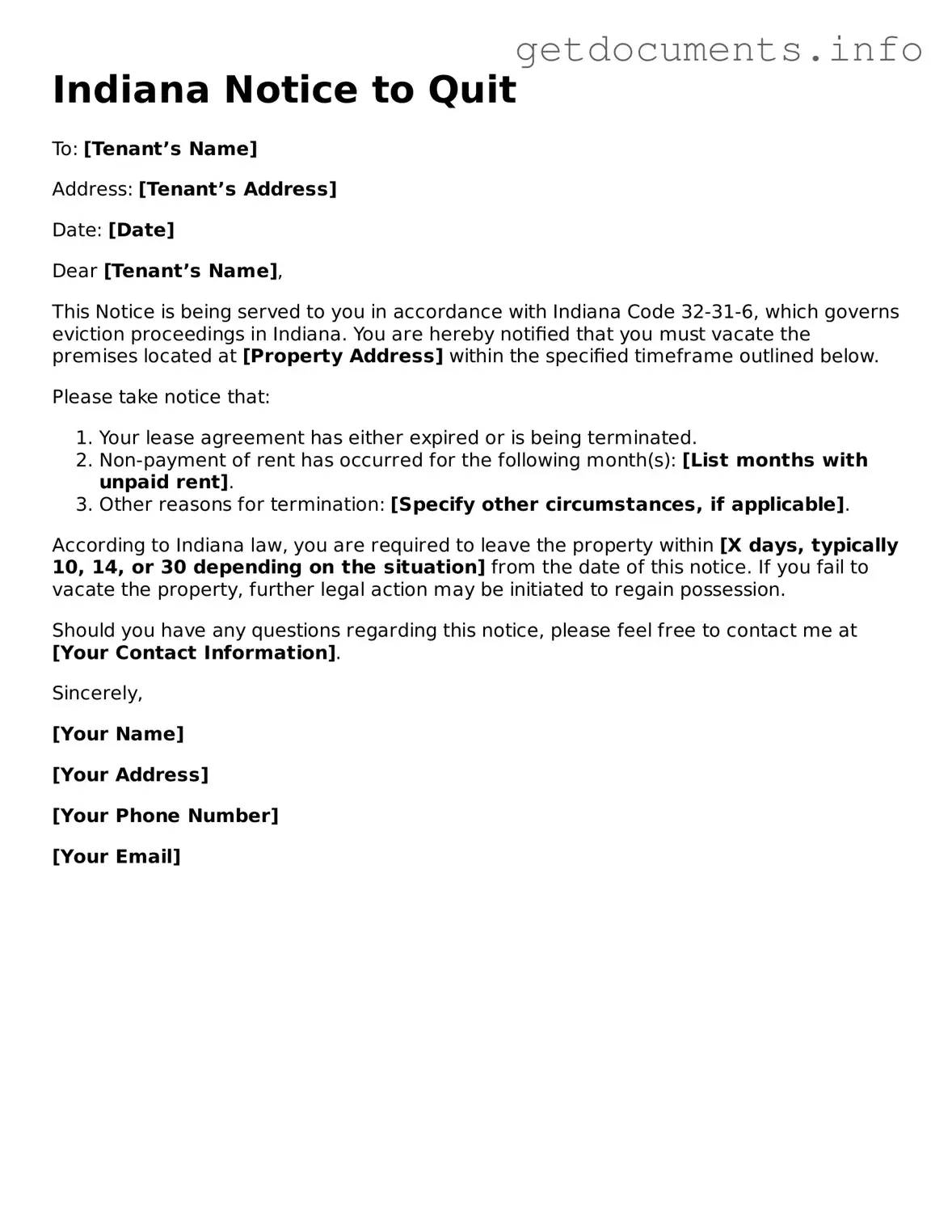Free Notice to Quit Template for Indiana
The Indiana Notice to Quit form is a legal document that a landlord uses to inform a tenant of their need to vacate the rental property. This form serves as a crucial step in the eviction process, providing tenants with formal notice of their lease violations or the expiration of their rental agreement. Understanding this form is essential for both landlords and tenants to navigate the rental landscape effectively.
Ready to fill out the Indiana Notice to Quit form? Click the button below to get started!
Access Notice to Quit Editor
